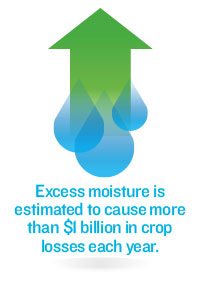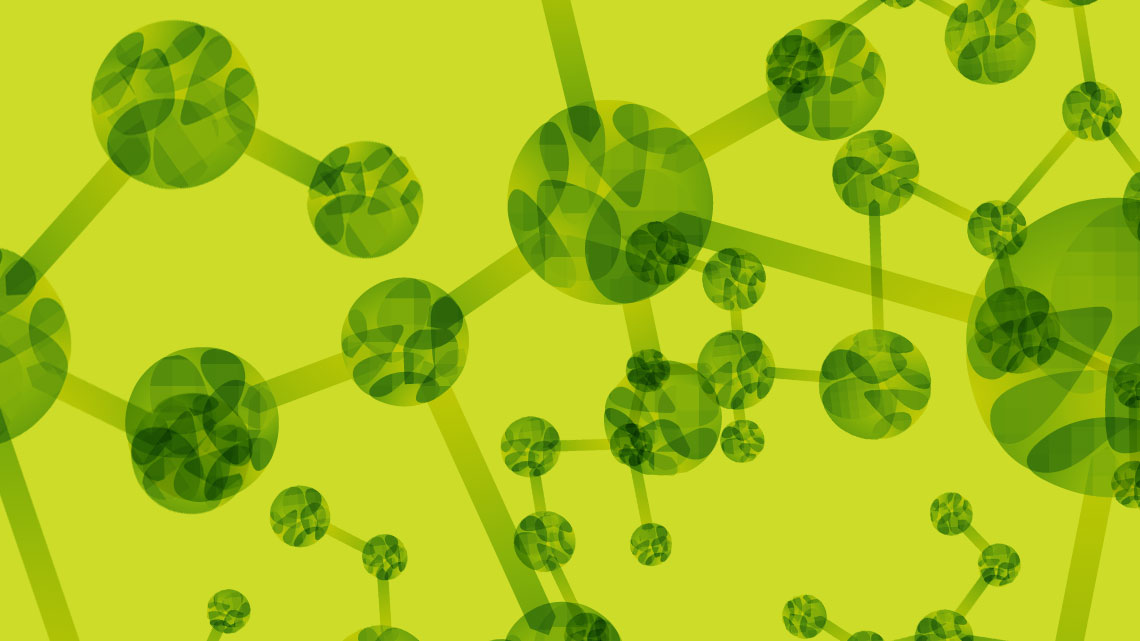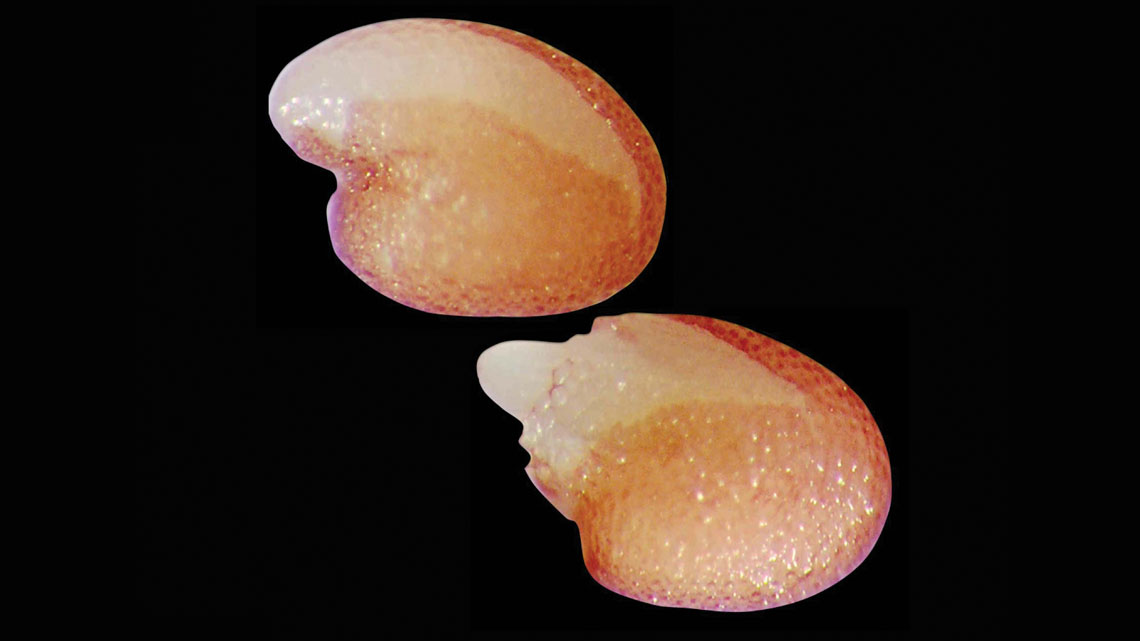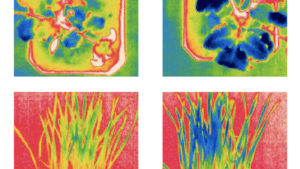Researchers study how hormones can be used to control seed dormancy and germination, saving millions of dollars of crop loss each year.
After lengthy periods of drought, this past summer and fall saw above-average rainfall across the United States, especially in the coastal Northwest, parts of the Northeast and much of the Midwest and South. Heavy rains in early summer and late fall helped alleviate drought in breadbasket states such as Kansas, Nebraska and Oklahoma.
But more rain is not always welcome. That’s especially true for cultivators of late-season wheat and other cereal crops. Moisture can cause pre-harvest sprouting, or early germination of wheat within the grain head. The process causes $1 billion in annual crop losses, according to an estimate from Kansas State University plant geneticist Bikram Gill.
Controlling seed germination could help stem those losses, but this is a major challenge. Sprouting and flowering are two of the most complicated processes plants will undertake, and plant biologists are still trying to understand how they work.
“Wheat grains and many vegetable seeds don’t have natural dormancy,” says Hiro Nonogaki, a seed biologist at Oregon State University. “Over the course of domestication, we picked whatever we germinated, so we selected a kind of super-germinator.” He adds this can be a positive thing — easily-germinating seeds are good starter material for agriculture. But that’s not the case for cereals such as wheat, sorghum, barley and rice.
Fortunately, the same techniques for enhancing germination can also be used to suppress it. Nonogaki is trying to understand how to do that by studying and genetically regulating the hormones that govern seed germination. Research in his Integrative Seed Biology Lab, funded by the National Science Foundation, could help biologists and growers harvest grains at just the right time, using the plant’s own natural cues. This could lead to crops that stay dormant longer, so they can be harvested before the rains awaken them.
Turning On the “Off Switch”
Two key hormones are involved in a seed’s cycle of dormancy and germination: Abscisic acid (also called ABA) and gibberellin. Abscisic acid inhibits growth while gibberellin stimulates it. “In terms of germination, gibberellin is the good guy, and ABA is a bad guy, an inhibitor of germination,” Nonogaki says.
But for prevention of pre-harvest sprouting, the bad guy is the hero.
In 2011, Nonogaki and his colleagues published research demonstrating a novel “gene switch” system that could activate ABA and induce dormancy in the model plant Arabidopsis thaliana. The team found that changing a single gene that codes the metabolism of ABA was enough to increase dormancy.
It was a crucial finding, because it meant seed germination could be either promoted or suppressed using genetic technology.
That effort required the use of a chemical called Intrepid2F, an Environmental Protection Agency-approved insecticide, which acted as a trigger for the gene switch. But the researchers thought it would be impractical to spray vast quantities of the insecticide on massive production fields, Nonogaki says. So this year, he published an update: A hormone-cascade system that requires no exogenous chemicals yet also triggers large quantities of ABA.
Nonogaki found he could enhance a positive feedback loop in the seed; producing ABA as the seed begins to mature amplifies the production of even more ABA. Higher levels of ABA induce dormancy naturally, he explains.
“We call it a spontaneous seed dormancy system,” he says. “We don’t have to add a chemical anymore.”
To do it, he used the plant’s own internal signaling system. Downstream genes are activated by the presence of hormones, switching on or off as hormone levels change throughout the seed development process.
“Our current plans are to create spontaneous dormancy in the field, which doesn’t require chemicals. Then when we need to recover germination, we can use a gene switch to trigger a positive change.”
— Hiro Nonogaki
In the early stages of seed growth, the embryonic plant creates the roots of future plant organs, including roots and leaves. Dormancy usually sets in toward the end, before the seed begins to dry out.
In Nonogaki’s new approach, the team focused on a seed-specific gene promoter region that gets turned on at this maturation stage. They introduced the promotor gene using agrobacterium, a species of bacteria that’s a common tool in biotechnology. The gene causes an ABA cascade, kicking in just as the plant is beginning to produce ABA on its own. It sounds paradoxical, but the ABA-producing gene is regulated by the production of ABA.
“When ABA is produced, ABA stimulates this promotor, telling it ‘we need more ABA.’ When more ABA is produced, this gene is turned on again. It’s kind of an endless cycle of being amplified,” Nonogaki explains. “We learned this mechanism from seeds, so we are trying to take advantage of discoveries from seed biology to change the behavior of seeds. It’s always the best option to learn from nature. Nature has a long history, and it has a lot of interesting mechanisms.”
In Nonogaki’s most recent work, the seeds are also marked with green fluorescent proteins, which enables them to be sorted easily.

“Our current plans are to create spontaneous dormancy in the field, which doesn’t require chemicals. Then when we need to recover germination, we can use a gene switch to trigger a positive change,” he says. “We really think we need both approaches, a suppression and recovery approach.”
Future Challenges
Even as they make progress in understanding hormonal regulation of plant growth, biologists still have much to learn about how these processes change among generations. The next mystery is how to unravel epigenetic regulation, Nonogaki says.
Epigenetics is the study of changes that are not caused by alterations in DNA. Some of these changes are heritable, and some are regulated by what was formerly considered “noise DNA” in the genome. Plant biologists are increasingly studying epigenetic changes to plant growth cycles, including germination control or control of the timing of flowering.
“Flowering and seed germination have some things in common. At least I think so,” Nonogaki explains. “Those are big decisions for plants.” He adds that plant biologists like him see major potential in epigentic research on seeds.
In the meantime, Nonogaki says basic research on hormone regulation promises to pay big dividends.
“Once we figure out the basic hormonal regulation mechanism in model plants such as arabidopsis, we might be able to take advantage of the same information for many different species,” he says. “We’re trying to translate the knowledge that we obtain from basic research into agricultural species.”













